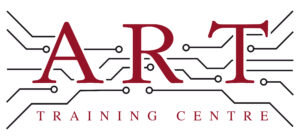Definition
Hook Solder Terminal is a type of electrical connection used in electronics manufacturing. It consists of a metal terminal with a hook-shaped design that allows for secure attachment to wires or components. This component is crucial for creating reliable connections in various electronic devices, ensuring effective conductivity and stability within circuits.
How It’s Used in the Industry
In electronics assembly, the Hook Solder Terminal is typically attached to printed circuit boards (PCBs) during the soldering process. First, the terminal is positioned on the PCB, aligning it with designated pads. Then, solder is applied using methods like wave soldering or hand soldering to create a strong bond. After soldering, technicians inspect the connections for quality assurance. Understanding the application of hook solder terminals is vital for both trainees, who learn the basics of soldering, and experienced professionals, who ensure the reliability and longevity of electronic products.
History & Origins
The Hook Solder Terminal became common in electronics manufacturing during the mid-20th century, coinciding with the rise of consumer electronics. Its design facilitated easier and more reliable connections, leading to widespread adoption. The development of standards such as IPC (Institute for Printed Circuits) further promoted its use by establishing guidelines for quality and performance in soldering practices. As technology advanced, the hook solder terminal became integral to modern electronic assembly, enhancing efficiency and reliability.
Variations
There are several variations of the Hook Solder Terminal, including different sizes and materials, which can affect their suitability for specific applications. For example, terminals may vary in thickness or plating, influencing their conductivity and resistance to corrosion. Compared to other terminal types, such as ring or spade terminals, hook solder terminals offer unique advantages in ease of connection and soldering, making them particularly useful in tight spaces or complex assemblies.
Modern Applications
Today, Hook Solder Terminals are widely used in electronics production, particularly in through-hole and surface mount technology. They play a crucial role in ensuring reliable connections in devices ranging from consumer electronics to industrial machinery. Their importance is underscored by compliance with IPC standards, which dictate quality and performance criteria. Additionally, their use in professional training programs highlights their relevance in teaching proper soldering techniques and ensuring high standards in electronic assembly.
Practical Tips & Training
When working with Hook Solder Terminals, it’s essential to maintain a clean workspace and use appropriate safety gear, such as goggles and gloves. Inspect terminals for damage before use, and ensure soldering tools are in good condition. Practicing proper soldering techniques, such as maintaining the right temperature and applying solder evenly, is crucial. Structured training and certification in electronics can enhance understanding and skills, ensuring high-quality work in soldering and assembly processes.


